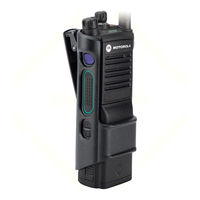Motorola APX 7000L Manuals
Manuals and User Guides for Motorola APX 7000L. We have 9 Motorola APX 7000L manuals available for free PDF download: User Manual, Quick Reference Manual, Quick Reference Card
Motorola APX 7000L User Manual (181 pages)
Dual Display
Brand: Motorola
|
Category: Two-Way Radio
|
Size: 2.27 MB
Table of Contents
-
Disclaimer
18 -
-
-
Keypad37
-
-
-
Viqi63
-
-
Contacts71
-
Scan Lists75
-
Scan78
-
-
Fireground86
-
Man down89
-
Radio Lock111
-
Radio Inhibit115
-
-
GPS Operation115
-
Location Format117
-
-
-
-
Re-Pair Timer128
-
Holster Sensor139
-
-
-
Utilities150
-
-
Analog Options157
-
Digital Options157
-
Transmit Inhibit158
-
Instant Recall159
-
-
Advertisement
Motorola APX 7000L User Manual (213 pages)
Brand: Motorola
|
Category: Two-Way Radio
|
Size: 4.51 MB
Table of Contents
-
Disclaimer
23 -
-
-
Keypad41
-
-
-
Contacts80
-
Scan Lists86
-
Scan88
-
Man down99
-
Security127
-
Radio Lock127
-
-
-
Radio Stun130
-
Radio Kill130
-
-
-
GPS Operation132
-
-
-
Re-Pair Timer146
-
-
-
Utilities174
-
Transmit Inhibit184
Motorola APX 7000L User Manual (128 pages)
TOP DISPLAY
Brand: Motorola
|
Category: Two-Way Radio
|
Size: 1.86 MB
Table of Contents
-
Disclaimer17
-
-
-
-
Scan Lists58
-
Scan59
-
-
Fireground68
-
Man down72
-
-
Advertisement
Motorola APX 7000L User Manual (99 pages)
TOP DISPLAY
Brand: Motorola
|
Category: Two-Way Radio
|
Size: 1.86 MB
Table of Contents
-
Disclaimer
15 -
-
-
-
Viqi43
-
Scan Lists46
-
Scan47
-
-
Fireground54
-
Man down57
-
-
Utilities79
-
Motorola APX 7000L User Manual (114 pages)
Brand: Motorola
|
Category: 2-way radio
|
Size: 3 MB
Table of Contents
-
Disclaimer
20 -
-
-
Motorola APX 7000L User Manual (118 pages)
Brand: Motorola
|
Category: Two-Way Radio
|
Size: 3.65 MB
Motorola APX 7000L Quick Reference Manual (44 pages)
TOP DISPLAY
Brand: Motorola
|
Category: Two-Way Radio
|
Size: 6.89 MB
Table of Contents
Motorola APX 7000L Quick Reference Card (2 pages)
Digital Portable Radios
Brand: Motorola
|
Category: Portable Radio
|
Size: 0.48 MB
Motorola APX 7000L Quick Reference Card (2 pages)
Digital Portable Radios








